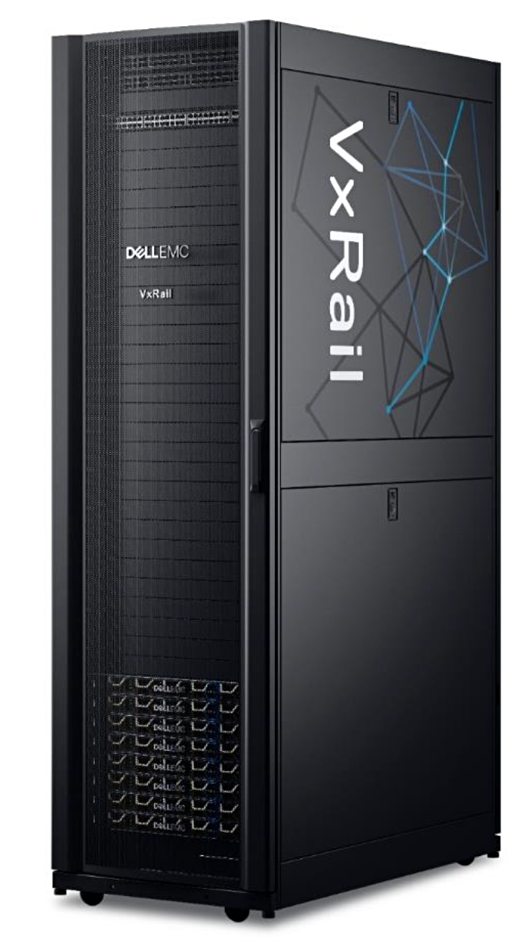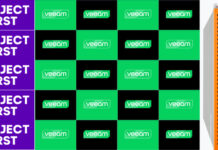Dell Technologies has given its VxRail hyperconverged (HCI) systems faster processors to beef up compute performance. It has also added compute-only nodes and enhanced storage capacity with disaggregated shared storage, and there is better tool software for installation and lifecycle management.
These upgrades are likely aimed at keeping VxRail systems at the top of the HCI tree in market share terms and countering HPE’s disaggregated HCI differentiation by getting rid of stranded storage and storage capacity limitations.
Jeff Boudreau, Dell’s Infrastructure Solutions Group president and GM, said: “Customers turn to Dell EMC VxRail because it provides a simple IT experience and path to hybrid cloud … Today’s updates help customers get more from their existing resources, support even more workloads and simplify deployment to better meet business demands.”
Compute boost

VxRail nodes are based on Dell PowerEdge servers. These, in a fifteenth generation upgrade, recently received performance enhancements with gen 3 Xeon SP (Ice Lake) processors, gen 3 AMD EPYC (Milan) CPUs, and PCIe Gen 4 bus support. Some received Nvidia GPU options as well.
VXRail nodes now get these faster CPUs and PCIe Gen 4 bus as well as Optane PMEM 200 series support. Dell claims altogether this delivers 42 per cent more cores for faster performance when compared to VxRail nodes based on the prior 14th generation PowerEdge servers. Optional Intel Optane persistent memory 200 series increases bandwidth by 32 per cent on average over the previous VxRail generation.
VxRail nodes using Milan CPUs, with up to 64 cores per processor, also have increased performance, but no specifics were provided.
V-Series VxRail nodes now get Nvidia A40 or A100 Tensor Core GPU options so they can handle GPU-style workloads. VxRail P Series get an up to 20 per cent increase in capacity and the E Series receive 50 per cent more PCIe slots.
Storage boost
VxRail gets a storage boost for clusters with limited storage capacity in two ways. One is through VMware’s vSAN – HCI Mesh and the other through VMware Cloud Foundation. These alternative methods enable the effective storage capacity of a VxRail vSAN cluster to be scaled independently of its compute capacity.
Both depend upon a new type of VxRail node called a dynamic node which is a compute-only system with no storage.
With VMware’s HCI Mesh, vSAN allows one or more vSAN clusters to remotely mount datastores from other vSAN clusters (servers) within the vCenter inventory. A cluster with excess compute can mount excess storage from a remote vSAN cluster.

Using VMware Cloud Foundation a vSAN cluster’s dynamic nodes can connect to remote PowerMax, PowerStore and/or Unity XT storage arrays. This seems similar in outcome to HPE’s Nimble disaggregated HCI (dHCI) technology and we thought it may be based on VMware’s acquired Datrium technology which separated HCI compute nodes from a central and shared storage resource. But VMware staffer John Nicholson said: “HCI Mesh is 100 per cent vSAN/VMware internal non-acquired IP.”
Eric Miller, Rackspace’s VP of private cloud, said: “Combining the simplicity and agility of VMware Cloud Foundation on Dell EMC VxRail with enterprise storage arrays like Dell EMC PowerStore helps us address even more workloads. It’s the perfect blend of resources, allowing us to take advantage of HCI’s automation, hybrid cloud’s agility and enterprise storage’s performance and efficiency.”
Tools boost
VxRail customers will receive a better set of HCI System Software tools to manage their systems:
- Automated cluster deployment with self-service tools to validate, orchestrate and cluster,
- Dynamic redeployment of workloads and reallocation of nodes within a cluster,
- Lifecycle management (LCM) can now carry out VMware updates, such as NSX-T and Tanzu, in a single upgrade cycle,
- LCM can have the Nvidia AI Enterprise and VMware installation bundle added to the LCM process for easier deployment.
You can check out downloadable VxRail Data Sheet and Spec Sheets to find out more.
Availability
- VxRail systems with Intel 3rd Generation Xeon processors will be globally available in July 2021.
- VxRail systems with AMD 3rd Generation EPYC processors will be globally available in June 2021.
- VxRail HCI System Software updates will be globally available in July 2021.
- VxRail dynamic nodes will be globally available in August 2021.
- VxRail self-deployment options will begin availability in North America through an early access program in August 2021.








